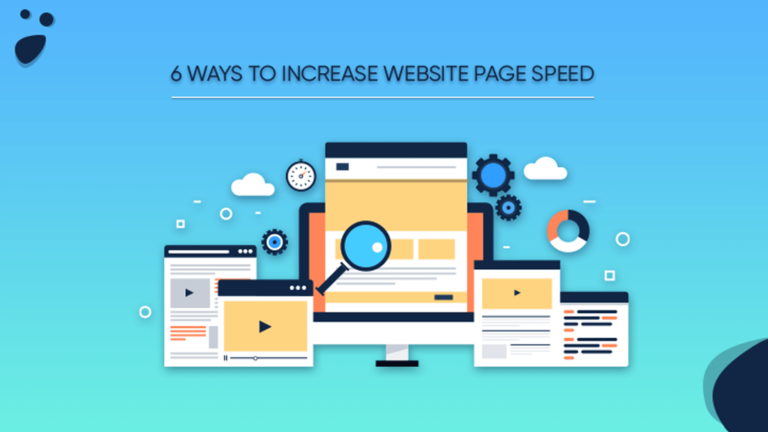Page speed optimization is the technique that you must never neglect if you want your web pages to rank higher in the SERPs. Your website page speed is absolutely critical for enhancing the conversion rate. This is the reason why there’s so much hype about speed optimization and its importance.
The experts at Mayabytes have already outlined the importance of website page speed for Google. But the question here is that what steps should be taken after conducting the website speed test.
How to reduce the page loading time?
Well, don’t worry!
Mayabytes is here with some purely technical solutions for optimizing your average page load time.
But first, you need to evaluate your page speed with Google PageSpeed Insights
After you have evaluated your website, follow these 6 useful ways to increase website page speed.
Reduce the file size of images
Images greatly contribute to enhancing your user interaction, but at the same time, large-sized images significantly increase your page loading time.
Removing the images is not at all an option, it’ll make your website dull and drab.
To decrease the average page load time, you need to reduce the file size of the images.
One way to do it is to crop the image to the exact measurement that is required on the web page.
Remember, crop the image before you upload them, don’t adjust the width parameter after uploading the full image.
Another option is to compress the image file before uploading. There are many tools available in the market for file size compression.
If you compress a 2MB file to 25-30KB, you’ll notice a significant change in your website speed.
Enable file compression
Compressing files is one of the most effective ways to achieve page speed optimization. As suggested for images, you need to compress the JavaScript, HTML, and CSS files that are larger than 150 bytes.
You can use the software Gzip for file compression. It works best for the CSS and HTML files.
Remember not to use Gzip for image files because it won’t let you control the image quality.
There are other compressions tools like Photoshop, where you can retain the quality of the images while compressing them.
The rule is simple, the lesser the size of the files, the better the speed of the web page.
Minimize the Time To First Byte
Time To First Byte – TTFB is the amount of time a browser waits before it receives the first byte of the data from the server.
When you’ll conduct your page speed analysis, you’ll realize that the TTFB is the amount of time that is in addition to what your page takes to load the full content.
It is actually the time that your website page takes before it starts loading.
As per Google’s recommendation, a good time to first byte is less than 200ms. If you are exceeding it, you need to work it out immediately.
Take the website performance test today!
Reduce the number of HTTP requests
As per Yahoo’s information, 80% of the page loading time is utilized in downloading various page components like scripts, images, stylesheets, and etc. And for each component that is downloaded, an HTTP request is made.
In this way, more components will lead to more HTTP requests and eventually, your web page will have a slower response time.
Therefore, you need to reduce the HTTP requests and the best way to do it is by combining the files.
Combine all the scripts into a single script, likewise, combine all the CSS into one stylesheet. By doing this, you’ll reduce the number of files on your webpage which will lead to reduced HTTP requests made by your page.
As a matter of fact, reduced HTTP requests will significantly enhance your web page speed.
Use a Content Delivery Network (CDN)
Content Delivery Networks also known as Content Distribution Networks are networks of servers that distribute the load of delivering your site’s data.
CDNs are present at multiple locations that are geographically diverse. When you use CDNs, the copies of your website data are stored at various servers at geographically diverse locations.
Whenever a user visits your site, the request is routed to the closest available server and therefore, the data is delivered at a faster rate.
In this way, using CDNs greatly increase your web page speed.
Plus, at the time when your site receives heavy traffic, the response time would not get affected as the data would be delivered from multiple locations.
Allow browser caching
When a user visits your web page, all the page components like scripts, images, stylesheets, and etc are downloaded from the server. This takes a lot of loading time.
If you enable browser caching, all of the downloaded components will be stored in the cache memory of the user’s hard drive.
This means the next time the user visit your page, there will be no need of sending the HTTP requests for all the components again.
All the page components will already be available in the cache memory and it will take minimum time to load the complete page.
Hence, it will serve as another effective technique for page speed optimization.
Conclusion
There are numerous other ways to increase the speed of your website. Every problem has to be dealt with a befitting solution.
But we have mentioned some of the most effective ways of optimizing the website speed.
Mayabytes is a digital hub where you get the solutions to conquer all your digital challenges. Therefore, if you’re yet struggling to attain an optimum website speed, our doors are open for you.
Just visit www.mayabytes.com and see how your website runs at the speed of light!


